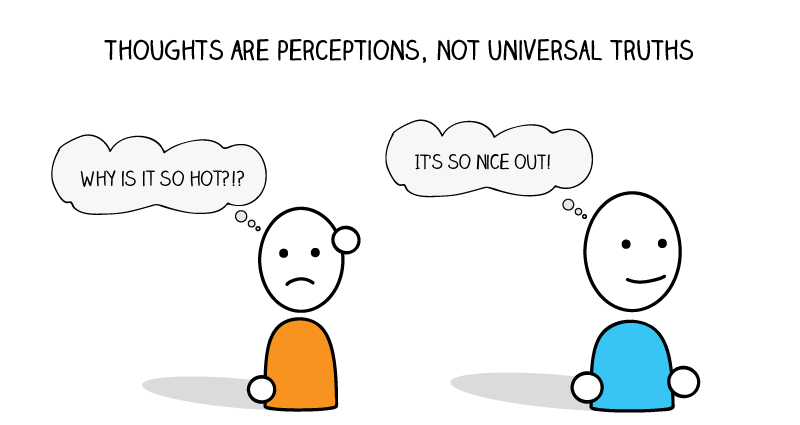Contents
Intrusive and self-deprecating thoughts, illogical attitudes, self-winding — all this prevents us from fighting anxiety. How can you calm down if the tocsin sounds in your head: “everything will only get worse” and “I can’t cope”? Clinical psychologist Jill Weber in Be Calm. Proven Anxiety Management Techniques explains what we can do to learn to separate our speculation from reality.
1. Write down your thoughts
Thought recording is one of the most effective strategies for reducing anxiety levels. Instead of replaying something in your head over and over again, put it on paper. So you can more objectively, without excessive emotionality, evaluate your thoughts and take them under control. You will stop acting out of an excited state, guided only by far-fetched ideas and notions, which will help reduce anxiety.
Do this exercise whenever you feel anxiety approaching to stop the wave of unwanted thoughts before they completely take over your consciousness. This strategy will also help you rethink and look at the anxiety attack from a different angle after it has passed.
Choose what exactly causes anxiety in you: a situation, an interaction with someone or something, an image, a thought.
What worries or bothered you the most in this particular situation?
What is your biggest fear or fear in this case?
What is the worst case scenario you imagine or imagined?
What was the most common thought that popped into your mind during, after, or even now as you look back on this event?
Rate how much you believe each such thought (use a scale from 1 to 10, where 1 is “I don’t believe at all” and 10 is “I believe 100%”).
Return to this exercise in 2-3 days or a few hours to see if you continue to believe these disturbing thoughts just as strongly?
2. Notice the pitfalls of thinking
Over time, we become hostages of our disturbing thoughts, it seems to us that they are real, and this gives us some certainty. But in fact, being in a restless state, it is impossible to objectively assess how real or unreal our fears and concerns are.
Living in a non-existent world created and controlled by anxiety, we perceive things as they might be if our fears came true. However, nothing terrible happens, and the chance that the most nightmarish scenarios of the development of events are realized is negligible.
Listed below are a few anxiety-increasing thought traps that we unconsciously fall into. Knowing their device, you can recognize them in time and prevent yourself from falling into the abyss of fear and anxiety.
Thinking «all or nothing»
Everything either goes well, or flies into hell. You are either perfect or you are nothing.
Overgeneralization
If something bad happens, you think that it will always happen in such situations.
catastrophic thinking
Looking into the future, you see only horror and suffering instead of much more realistic scenarios.
Labeling
Assigning fixed, generalizing labels to oneself or others without regard to context («I’m a failure», «I won’t succeed», «I’m a burden», «I’m crazy»).
«I should» and «I should»
You have very clear ideas about how you should and how you should act. But when you fail to act on your beliefs, you expect dire consequences.
Each time you notice one of these thought traps, you reduce your anxiety level as you begin to see the situation more objectively, or at least look at it from a different angle.
3. Separate productive thoughts from unproductive ones
Another useful strategy to help you when your mind is full of disturbing thoughts. Thanks to it, you will be able to assess how justified and useful worries about a particular problem are. Feeling yourself sinking into an anxious state, try to separate productive thoughts from unproductive ones, guided by this checklist.
Productive thoughts:
My anxiety arose in response to a specific problem.
My anxiety concerns an event or thing that I will have to deal with in the near future or in the foreseeable future.
I have some control over the possible outcome of a situation.
I can make a decision or take some action to help resolve the situation.
This anxiety is recent and is not one of those disturbing thoughts that swirl in my head all the time.
There are real steps I can take to get rid of this anxiety.
Unproductive thoughts:
I’m worried about some uncertain event in the future that might not even happen.
I can’t control this anxiety.
I think of possible ways to overcome this anxiety, but none of them seem good enough to me.
I’m obsessed with this anxiety, I can’t stop thinking about it.
This is a recurring worry in my life.
There is nothing I can do to alleviate this anxiety.
If anxiety falls into the “unproductive thoughts” category, the next time it arises, remind yourself that uncertainty is an integral part of life. Practice acceptance. If restless thoughts are productive, pay attention to planning specific actions.










